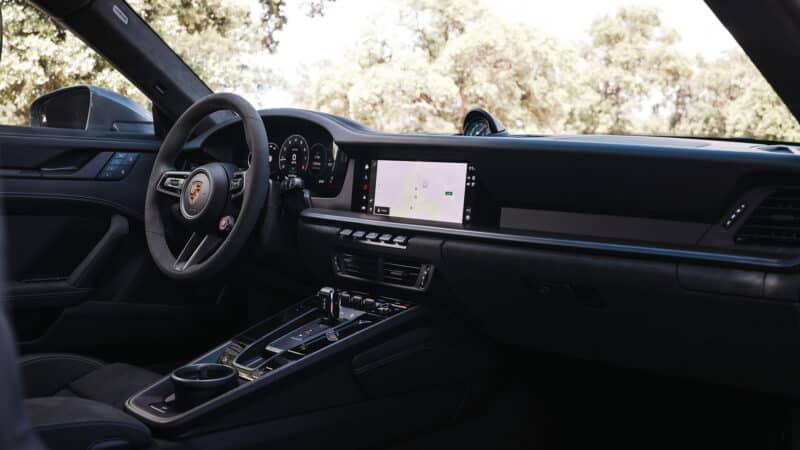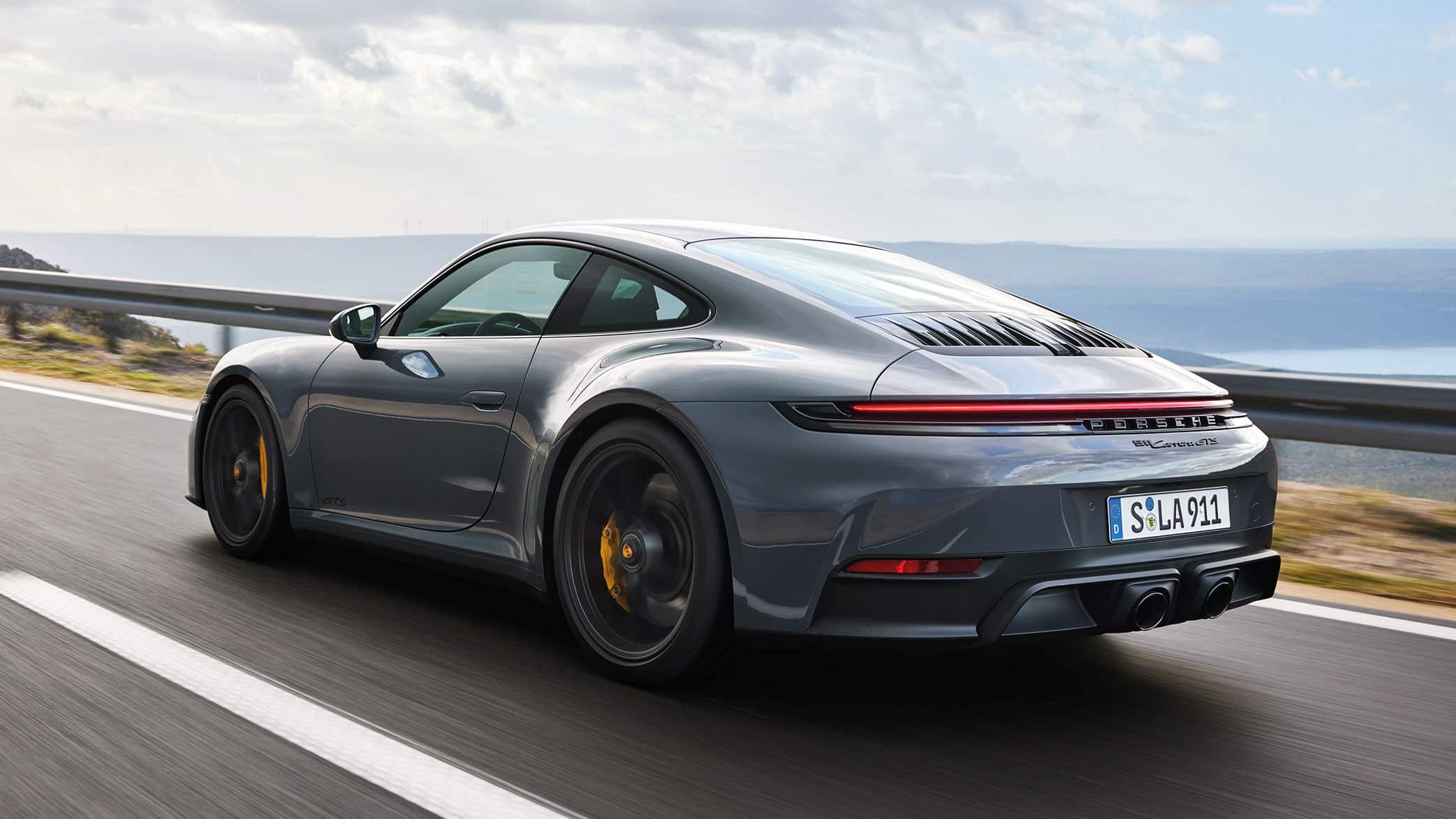2024 Porsche 911 Carrera GTS review: electric jolt for 60-year-old icon
Porsche’s facelifted Carrera GTS goes hybrid and as Andrew Frankel finds out, the battery’s benefits are instantly apparent

The battery in the GTS is small and fairly light but its effect on performance is positive
Rumours about how the Porsche 911 was going to address the environmental concerns of the modern era long pre-date even the outgoing first generation of the current 992 series, launched in 2019. I can remember at least 10 years ago chatting to Porsche’s then R&D boss Wolfgang Hatz and him conceding he could see no way of avoiding the turbo flat four motors being readied for the Cayman and Boxster finding their way into the 911. Happily, he was wrong. I can also remember asking another senior Porsche official, who’ll remain nameless as he’s still active in the industry, when the first electric 911 would be launched to which he replied, “After I’ve retired so I don’t get the blame for it.” That hasn’t happened either – yet.
But not even the world’s greatest sports car is immune to the changing world so, with this second generation, the first ever hybrid 911 is making its debut. And it’s all been done in a uniquely 911 way.
What are your thoughts on hybrids? Huge weight, plugging it into the mains, the ability to run on electricity alone, massive cuts in official fuel consumption and CO2 outputs and tiny tax bills as a result? Thought so. That’ll be a ‘no’ to all of the above.

The rev counter is, naturally, the central feature of the 12.65in curved display… but is the engine sound real?
For comparison’s sake, it’s worth pointing out that while the Panamera 4 E-Hybrid has a 25.9kWh battery, the one in the new 911 GTS is capable of storing just 1.9kWh of energy. That is not a misprint. Yes you can plug in the Panamera and on a really good day get 30 miles of electric range from it, but it adds 310kg to the car’s mass. The 911’s weight, by contrast, goes up just 60kg.
Why bother if you can’t plug it in or cut your tax bill? Essentially it future-proofs the 911 against foreseeable emissions legislation and provides scope to liberate vast amounts of easily accessed power.
To do it, Porsche has created a brand new 3.6-litre flat six engine, with a single turbo and no wastegate. It can do this because not only can the hybrid provide a powerful slug of torque at zero notice and idling engine speed, but that turbo is powered by exhaust gases and the hybrid itself. So when the engine would otherwise not be able to spin the turbo fast enough to deliver positive boost pressure, it’s done by electricity instead. And any excess energy at the other end of the scale is simply fed back to the battery to keep it charged, hence there being no need for a wastegate. It’s clever stuff.
“The hybrid reacts the moment your foot touches the pedal”
On the road it is not the amount of performance you notice most (though reducing the 0-62mph time from 3.4sec to 3sec flat is a massive cut at this level) but rather its accessibility. There is zero turbo lag, instant throttle response and at every point in the rev range. Indeed because the hybrid reacts the moment your foot touches the pedal, compared to a pure ICE engine that will take time to register the request and galvanise itself into action, for the first 2.5 seconds of a full-bore acceleration run the new GTS is quicker even than the current Turbo S which loses fractions of a second before even its wheels start turning.
At times, however, the car is just a touch too clever for its own good. For a start its integration inside the PDK gearbox means a manual version is no longer possible, though the potential remains in as yet unlaunched versions of the new car such as the Carreras S and T, which are likely to continue using versions of the old engine, as does the already announced base Carrera.
Second, the gearshifts are almost too slick, because the hybrid smooths those out too: sometimes it can feel more like the change of an S-Class Mercedes, not a Porsche 911. And the new engine sounds just a trifle artificial, as if the sound symposer has been allowed a little too much latitude. It’s still a fine baritone flat six voice, but how much is coming from the engine and how much through audio enhancement is not clear.
It isn’t much to forgive, not when the car is just so much faster but, crucially, more responsive too. The benefits keep coming, even when you’re balanced on or over the technical limit of adhesion: because the powertrain responds so precisely, so swiftly and decisively to the commands of your right foot, you can balance this model like no other standard street version of the 911 for at least the last dozen years.
Even so it is at least worth mentioning that I did do a few track laps and a number of road miles in a standard Carrera – at £99,800 the only 911 available for a less-than-six-figure sum – and found its lighter weight and smaller footprint resulted in nimbler and fractionally more entertaining handling.
The GTS, however, is an extraordinary device, at least as quick in the real world as the outgoing Turbo, but far more responsive and, crucially, available in both rear and four-wheel drive configurations. So I guess the big question is where the new Turbo and, indeed, Turbo S go from here? I don’t know, but I expect it’s going to be fun finding out.

Porsche 911 carrera GTS
- Price £132,600
- Engine 3.6 litres, six cylinders, petrol, turbocharged, hybrid
- Power 533bhp
- Torque 450lb ft
- Weight 1495kg (DIN)
- Power to weight 334bhp per tonne
- Transmission Eight-speed double clutch, rear-wheel drive
- 0-60mph 3.0sec
- Top speed 194mph
- Economy 26.4mpg
- CO2 244g/km
- Verdict Electric adds that bit more zip.

